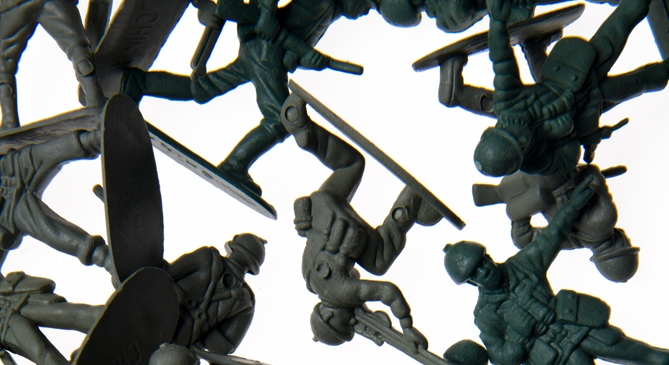
European defence: The next steps
Last year, the Kosovo air war highlighted the impotence of Europe's armed forces.The Americans provided more than three-quarters of the bombs dropped, and most of the advanced communications equipment. Whereas the European members of NATO spend about 60 per cent of what the US does on defence, their ability to deploy force in a region such as the Balkans is a meagre fraction of the Americans'.
The Helsinki European Council of last December agreed on the "headline goal" of a 60,000-strong Rapid Reaction Force. This represents a major step forward, so long as the force is - as planned -deployable within 60 days and able to operate for at least a year. Because of the need to rotate troops in and out of the area concerned, this implies a manpower pool of around 200,000 soldiers. However, the fulfilment of the headline goal alone will not be enough to ensure that Europe is truly capable of mounting autonomous military missions. Europe also needs, for example, more command, control and communications systems, and more capacity for moving men and equipment.
Furthermore, given the unceasing pressure on defence budgets, Europe needs to find ways of delivering better value for money. Europe's governments should therefore consider further, more radical options. In particular, they should define the areas in which armed forces can be pooled without an excessive loss of sovereignty, and then develop common capabilities in those areas.
The prospects of such an approach appear promising. For one thing, it is hard to imagine that any major European country would wish to act alone in a military operation outside its homeland. For another, there has been much convergence among the armed forces of the major European countries, a process which is continuing. Spain is establishing a professional army, while Italy has declared its intention to do so. And Germany, following defence minister Rudolf Scharping's response to the recent Weizsacker Commission, has at last decided to develop the capabilities that are suitable for deploying troops outside the European Union.
The European Council has already proposed the establishment of an EU air transport command. Such a scheme, which could be called "Eurolift", would make a much bigger impact if most European countries purchased the same military transport aircraft. This may happen, since Britain, France and Germany have recently announced their intention to develop and buy the Airbus A400M. Joint logistics, training and maintenance for these aircraft, along with the establishment of a joint command, would enhance military efficiency and provide substantial savings in an area that is crucial for the ability to send forces overseas. Eurolift could also embrace sea transport.
Eurolift need not provoke too many worries about national sovereignty. Each country would retain ultimate control of its transport assets, and have the right to withdraw them in the case of a national emergency; but these are likely to be few and rarely long-lasting. In any case, transport operations are less politically sensitive than combat missions. It should not be too much to expect the Europeans to achieve as much integration in this area as NATO already has with its fleet of AWACS early-warning aircraft.
A more sensitive common capability would involve the Eurofighter combat aircraft, which will become the mainstay of the airforces of at least four EU countries (Britain, Germany, Italy and Spain) for several decades to come. It is likely that other EU countries will also buy the Eurofighter, which will be by far the most costly weapons system in the European inventory. Thus any method for reducing the life-cycle costs of the aircraft, that also boosted operational efficiency, would be particularly desirable. In issue nine of the CER Bulletin, Tim Garden and John Roper argued the case for integrating the training, maintenance, logistics and command of the various Eurofighter squadrons as tightly as possible.
There is also the all-important human dimension. Europe's armed forces need to learn to think in common if they are to act effectively in common. This calls for the creation of a European Defence Academy, to provide a common educational basis for the officers from the various EU countries. Such an academy would, at minimal cost, promote the long-overdue convergence of defence policies, structures and doctrines.
Of course, such initiatives will not in themselves give Europe the Common Foreign and Security Policy to which its governments aspire. But the delivery of more effective capabilities would contribute to the material basis for that ambition.
Along with the Rapid Reaction Force, these initiatives would help to establish the sort of solidarites de fait which have traditionally proven so effective in bringing Europeans together. They would also deliver better value for money, which electorates and finance ministries expect of their defence ministries. And by showing the Americans that the Europeans can and will do more for themselves, as well as for their common alliance, they would help to establish the credibility of a European foreign and security policy.
